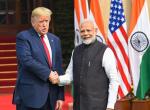In the annals of medieval Indian history, Prince Dara Shukoh, the eldest son of Mughal Emperor Shahjahan, shines as a learned personality of considerable eminence, so much so that his influence is felt even to this day. He was a man of many parts -- an astute politician, a religious scholar in the liberal mien, an intellectual par excellence, a philosopher far ahead of his time, a robust multi-lingual translator, and a poet of quality, and above all, a pioneer of inter-faith dialogue and a champion of religious tolerance.
How did Dara Shukoh acquire all of these sanguine qualities inspite of the vast distance between himself and the common man of his times? It was through his constant and consistent interaction with Sufi Mashaikhs, Hindu jogis, sadhus, sanyasis, Budh Bhikshus and other religious scholars. He had an excellent command over Arabic, Persian, Sanskrit and Urdu language, besides being well versed in Tafsir (explaining and interpreting verses of the Quran) and Fiqh (possessing a deep understanding or full comprehension of Islamic law).
Dara Shukoh’s translation of the Upanishads from Sanskrit to Persian had a great impact not only in India, but across the world. Khwaja Moinuddin Chishty, the 12th and 13th century Persian Islamic scholar, had a great impact on Dara Shukoh’s thought process. Majma-ul-Bahrain (Confluence of Two Oceans), Dara Shukoh’s magnum opus, is a path-breaking book and a trend setter in inter-faith dialogue. Although, there have been a number of Sufi saints who have successfully promoted inter-faith dialogue and peaceful co-existence in India, Dara Shukoh stands out as unique individual in more ways than one.
In fact, Dara Shukoh was against the labelling of Hindus as Kafirs, as he firmly believed that both Islam and Hinduism shared the same essential core.
This paper tries to critically examine some of these aspects of Dara Shukoh’s Inter-Faith Dialogue Framework. This study holds immense importance in today’s scenario, where religious tolerance is on the wane. It is high time that we implement Dara Shukoh’s inter-faith doctrine.
Born on March 20, 1615 (Sakīnat-ul-Awliya) to Shahjahan and Mumtaz Mahal, Prince Dara Shukoh received his early education from Hazrat Akhund Mirak, a renowned Peer of the Qadri Sufi Silsila. He was taught Arabic, Persian, Tafsir and Fiqh at a very early age. Tasawwuf (a mystical dimension of Islam, also known as Sufism) and spirituality caught his fancy. He received his spiritual education from prominent Sufis and sages of his time, including, luminaries such as Hazrat Mian Mir (Sufi of Qadriya Silsila), Mir Badakhshi and Baba Lal Das. They played a decisive and profound role in the shaping of Prince Dara Shukoh's Inter-Faith Dialogue.
Though he was one of the main contenders for the Mughal throne during the final years of Emperor Shahjahan’s life, Dara Shukoh was more inclined towards spiritualism, intellectualism and scholasticism.
His Inter-faith Dialogue called for maintaining amicable relations with Hindus and followers of other faiths. His “Risāla-i-Ḥaq Numa” bears testimony to this fact, wherein Dara Shukoh emphasizes, “I was among those devotees who were inclined to God naturally, devoid of performance of any sort of austerities. I have got enlightened about the secrecies of God head from the kindness of Saints and God-fearing people”.
Yet another book, “Safīnat-ul-Auliya”, describes the factors that compelled him to abandon the mundane life and embrace spirituality. He revered Sheikh Abdul Qadir Jeelani (RA).
Prince Dara Shukoh's spiritual journey can be divided into two distinct phases – a complete devotion to Sufism and, in the latter half of his short life, a dedication to comparative religious studies. This is the trigger point for his Inter-faith Dialogue ideology, which culminates in his magnum opus, “Majma-ul-Bahrain”.
The essence of Majma ul-Bahrain is that all faiths at the core are one and there exists no difference in the fundamental teachings of either Islam or Hinduism. In fact, while translating the Quranic verse, “Bismillahir Rahmanir Raheem”, Dara Shukoh avoids using the Arabic words Allah, Rahman and Raheem. He rather adopts a more neutral approach and states, “In the name of one who hath no name; with whatever name thou Callest Him. He uplifteth His head”. This in itself proves his respect and admiration for all religions of the world. Thus, we can safely claim that Dara Shukoh’s Interfaith Dialogue was “inclusive” rather than exclusive in nature.
Also, this line of thought highlights Dara Shukoh’s faith in Unitarianism, a straight impact of the pantheistic ideology of Ibn-ul-Arabi’s philosophy and the Vedantic pantheistic teachings of Baba Lal Das.
These teachings played a critical role in shaping Dara Shukoh’s world view, which is essentially engrained in the “Wahdat-i-Adyaan” as explained in Majma-ul-Bahrain. This can be described as an effort to reconcile Islam and Hinduism on those general truths which are often earmarked due to mere fervour of the externalities of faith.
In the preface of Majmā-ul-Baḥrain, Dara Shukoh mentions that after learning the true religion of Sufis and acquiring mystic inspiration, he acquired a thirst to know the truth about principles of monotheists of Indian religions too.
After engaging in discourses and deliberations with religious divines of the highest spiritual perfection and a study of their scriptures, he was convinced that there is no essential difference between Islam and Hinduism.
The central point of Dara Shukoh’s theosophy was the realisation of uncompromising Quranic Tawhid (monotheism) in the tenet of “Unity in Plurality.”
He says that in the heart of every Muslim, there is no space for more than one; either “I” or “He,” this tussle must perish on the physical as well as the spiritual plane to ensure the eternal peace of the soul.
He says that it is the faith of every Muslim to fight against his “lower self” (Nafs) and outside against “others” who do not recognise the oneness of God. A proud Muslim conquers others with his innate ego-ism, i.e., “I am and no other”, and cognises himself and the unity of God through a strong course of elimination by the logic of the sword.
The saint of Islam is always ready to wrestle “others” which look into his heart as dangers (Khatrat), and fight with them until he acknowledges them to be wanton pranks of his own self, but outside, he meets humanity with unlimited love of his true heart. He conquers God and man by receiving into his bosom and expands himself into the universal person (Shakhs-i-Kul) to feel ones with the whole creation and the creator.
It can be observed through his Majma‘-ul-Baḥrain that Prince Dara Shukoh believed in the principle of Ijtihad (use of reason to reach some conclusion independently). He stressed on use of reason “Aql” than blindly following interpretations of traditional Ulema (Islamic scholars).
He was a sincerely insightful man and loved to reach out on sovereign conclusions after acquiring a proper understanding through a variety of considerations, and deliberations.
The main reason behind Muslim hostility toward Hindus, as believed by Prince Dara Shukoh, was their ignorance of Hindu religious beliefs. Hence, he made arrangements for the translation of their main religious texts into Persian, to make them available to Muslims.
Yogvishta’s translation was a first step in this direction. However, the important translation in this connection was Dara Shukoh’s translation of Upanishads title as Sirr-i-Akbar. This was the earliest translation of the Sanskrit Upanishads and he has used simple and fluent Persian in this translation. He also consulted classical commentaries of Upanishads. The distinguishing feature of Dara Shukoh’s Interfaith Dialogue was its eclectic nature.
In Majma-ul-Bahrain, Dara Shukoh makes a meaningful attempt to achieve communion between the basic tenets of Hinduism and Islamic teachings. He did so by adopting many humanistic elements of Hindu philosophy and tried to find Islamic connections for such values through the self-intellectual interpretations of those Quranic verses and prophetic traditions which contain inversely some information about other religions.
He did not rely on the traditional interpretation of these verses, but adopted the Islamic methodology of Ijtihad to arrive at his own conclusions, which are compatible with both Islamic and Hindu teachings.
For example, while translating the Quranic term Kitāb-i-Maknūn (Verses 77-79, Chapter 56), he disagrees with most of those translations which imply that Kitāb-i-Maknūn implies Torat, Injeel or Zaboor. Dara Shukoh coins his own unique translation and insists that by Kitāb-i-Maknūn actually implies the “Upanishads”.
Prince Dara Shukoh blamed the Muslims’ lack of knowledge of the Upanishads and other Hindu religious scriptures for that community’s enmity towards their Hindu brethren. To counter this aggressive ideology and present an alternative and softer approach, Dara Shukoh translated the Upanishads from Sanskrit to Persian and titled it as “Sirr-i-Akbar” meaning (The Great Secrets) that essentially indicated the guidelines laid down by the Upanishads for peaceful living. Contrary to popular perception, Dara Shukoh also described the Upanishads as a treasure trove of monotheism.
(The paper is the author’s individual scholastic articulation. The author certifies that the article/paper is original in content, unpublished and it has not been submitted for publication/web upload elsewhere, and that the facts and figures quoted are duly referenced, as needed, and are believed to be correct). (The paper does not necessarily represent the organisational stance... More >>
Image Source: https://bharatabharati.in/wp-content/uploads/2012/12/dara-shukoh.jpg?w=460&h=302











Post new comment